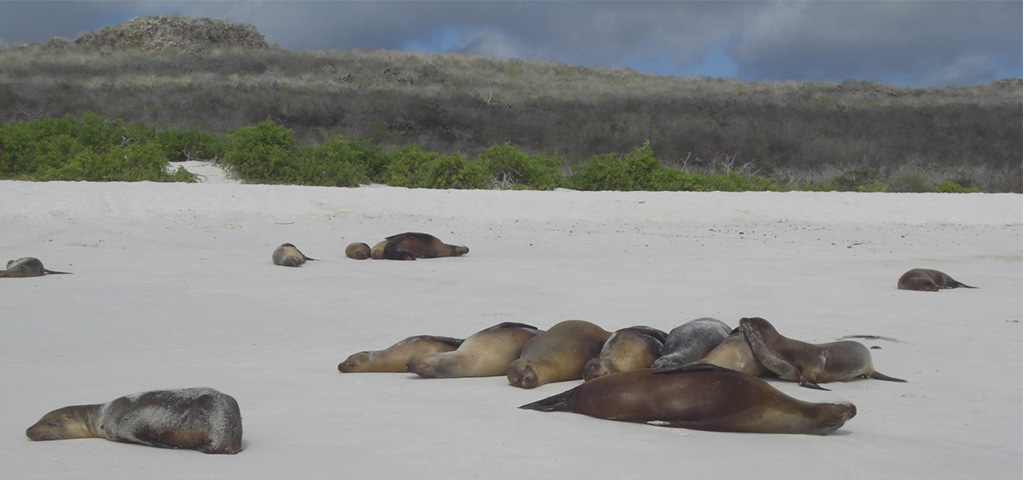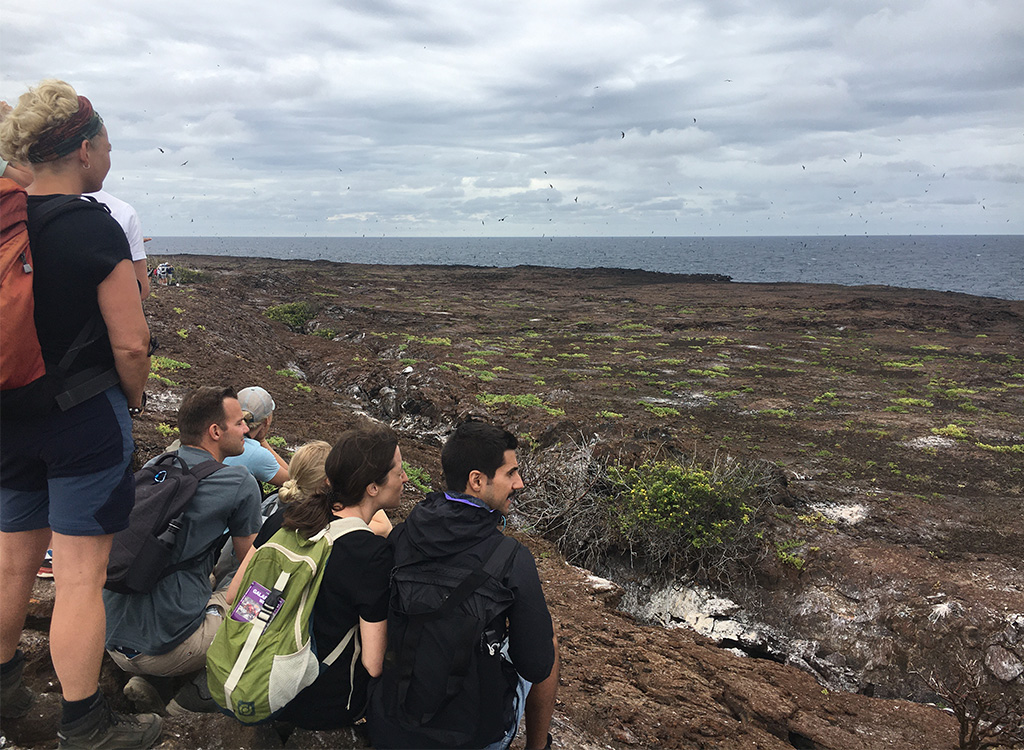Genovesa and Española are open to visitors wishing to visit these lovely spots on a full-day tour or a cruise adventure! (Genovesa can only be visited by cruise). Have a look at some details we have prepared about this announcement..
The last Quarantine
On April 24, 2024, the latest samples (for avian flu AH5N1) taken in Genovesa tested negative. Following this monitoring, the authorities established a 21-day quarantine for Genovesa and Española islands. If the next samples were negative, this would be the last quarantine, and the islands would reopen.
As we all expected, these two magnificent spots in the Galápagos are reopening their doors to travelers. In fact, these two islands are the last to reopen after being closed since September 19, 2023, when the first positive case was detected. Authorities had found dead birds (or birds exhibiting erratic movements) and among the disease hotspots were Genovesa and Punta Pitt (San Cristóbal), with the red-footed booby being the most affected species (lesser frigatebird, tropicbird, Nazca booby, and blue-footed booby). Authorities and environmental organizations began conservation and care tasks to safeguard the health of the birds and visitors.

Spots to Reopen
Punta Espinoza & Urbina Bay (Isabela) had reopened in early March, followed by Isla Lobos & Punta Pitt (San Cristóbal), and finally Genovesa and Española (site of endemic seabirds like the Albatross), two of the most iconic and wild islands in the archipelago. El Barranco and Darwin Bay on Genovesa Island, and Punta Suárez, Punta Cevallos, and Manzanillo on Española Island.
Española & Genovese Islands

Española the southernmost and one of the oldest islands of the Galápagos, is among the most popular and attractive of the archipelago. This island is a good example of a shield volcano, created from a single caldera in the middle of the island. Gardner Bay (swimming & snorkeling) & Punta Suarez (wildlife observation and 2 km hike) are the two most popular tourist spots.
Aside from the blue footed boobies nazca boobies, this island is home to the huge Waved Albatrosses (one of the most iconic bird species in the Galápagos, and considered critically endangered due to the Avian Influenza outbreak) as this is their only nesting site (from April to December). Indeed, April marks the “return” of the Albatrosses to Española, a natural event that you will surely love! You can visit the island on a day tour from San Cristóbal (bumpy ferry transfer: about 2 hours) or by Cruise.
Genovesa Island (accessible only by cruise), often referred to as “Bird Island,” is a paradise for bird enthusiasts and nature lovers alike. Located in the northern part of the Galápagos archipelago, this remote and pristine island offers a unique and intimate glimpse into the diverse wildlife that calls the Galápagos home. Upon arrival at Genovesa, visitors are immediately greeted by an array of seabirds, making it one of the most extraordinary bird-watching destinations in the world.
The island is home to large colonies of red-footed boobies, a rare sight elsewhere in the Galápagos. Aside from its avian inhabitants, Genovesa Island offers stunning landscapes and unique geological features. Prince Philip’s Steps, a steep but rewarding climb, lead to a plateau that provides panoramic views of the island and the surrounding ocean. This trail takes you through a seabird colony and past nesting sites, offering fantastic photo opportunities. Darwin Bay, with its pristine white sand beaches and crystal-clear waters, is perfect for snorkeling.
Avian Influenza Outbreak
“In November 2022, authorities announced an outbreak of H1N5 influenza at a poultry farm on mainland Ecuador. The Ministry of Agriculture and Livestock declared a Zoosanitary emergency (all avian products were banned from entering the Galápagos). With several infection hotspots, especially in the Andean Zone, the toll left at least 1.2 million birds dead or culled. The disease had already caused significant wildlife losses in Peru and Chile primarily.”

The immediate and coordinated action by the authorities and organizations in charge of the Galápagos National Park allowed for the rapid mitigation of the infection. The Galápagos National Park issued a statement: As of May 11, 2024, the following places will reopen to the public. As a precautionary measure, all operations – tourist vessels – must apply biosecurity protocols to carry out tourism activities in all areas.
Official Statement
Here you can read the official statement (translated to English by ITK Voyage) issued by the Galápagos Islands authorities including the Galápagos national Park to Tour Operators.



